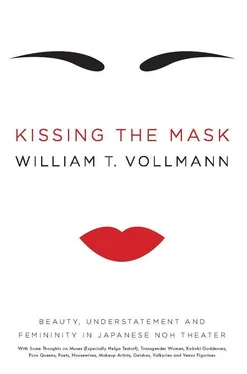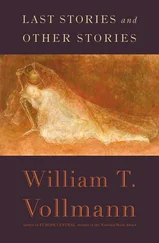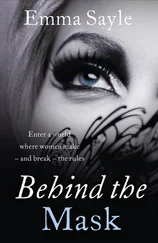“Oh, you mean Noh dance ?” inquired my friend Reiko, who translates my novels, and I was sure that I didn’t, because what I’d admired for a quarter-century now were the “ Noh plays ” in their various, variable and at times contradictory English translations. In short, I had read the librettos without going to the operas. And what librettos! Consider the play “Kagekiyo,” one of my favorites. (I have never seen it performed; Mr. Umewaka, who’s played the role four or five times, and remembers seeing both his father and grandfather perform it also, tells me that it possesses excellent music but remains difficult to bring alive because it has very little dancing, “just sitting.”) When at the wish of his daughter, whom he has not seen since her babyhood and whom he’ll never see again, the protagonist chants the tale of his bravery at the battle of Yashima long ago, his youth’s rashness, strength and goodhumored generosity return to life in the telling, but only provisionally, even mockingly, for we cannot forget his present decrepitude. Just as darkness peeps out from within the deep wide sleeves of a Noh performer’s kimono, so death flickers through that briefly recollected triumph, which is no more substantial than the reflections on that extremely polished yet unlacquered reddish stage-sea. The muscular pine tree of the mirror-board stands behind all, its arm twisted behind its wooden torso (it represents eternity, or, some say, divinity); and Kagekiyo’s life is but one more dance in the larger dance of doom, after which Mr. Umewaka casts a golden fan upon the floor: Once the Heike clan reigned over all, but they overreached themselves, and the Genji family obliterated them. Kagekiyo fought on the losing side, the Heike one, and that is why he’s been exiled. The destruction of the Heike gets told in one Noh play after another. (Not surprisingly, there are more Heike than Genji stories in the repertoire, since whether or not they end peacefully, Noh plays tend not to end happily.)
As soon as his victory’s danced out, Kagekiyo sends his daughter back home to the capital, the center of the world, from which he’s been excluded for life. When I asked Mr. Umewaka why he committed such an act, which from a Western standpoint appears to be either cruel or almost insanely prideful, he replied, “That is according to the interpretation of the player, because the conclusion is not written. In my opinion, the situation is that he cannot expect a cheerful life since he is under shura , so even a family member could not help him. So it would be too sad for her.” Shura is, if you like, damnation. 4“All the warriors, honorable or not, are sinful and enter a shura situation.”
In my Judeo-Christian culture, it is impossible to be simultaneously honorable and damned. Even Dante’s Ulysses, brave, alluring, glorious as he seems, has nonetheless convicted himself of prideful disobedience by transgressing the world’s limits, set by God: the Pillars of Hercules. In effect, his sin is the same as Adam and Eve’s. It was surely Dante’s intention that I sympathize with him. But I am also supposed to condemn him (which I decline to do). Meanwhile, in the semi-fictive medieval war chronicle Taiheiki , immediately before the warrior brothers Masahige and Masasue, who have been defeated in battle, commit seppuku, they agree on wishing, even though it is “deeply sinful,” “to be reborn again and again for seven lives in order to destroy the enemies of this court!” Not only does Taiheiki ’s anonymous author command my sympathy on his heroes’ behalf, but he also solicits my admiration for them. He gets it.
“Isn’t it possible to be an honorable warrior and not be suffering and sinful?” I asked Mr. Umewaka.
“This is the sin of human beings,” he replied. “But the point of Noh is that everyone can achieve peace of mind through Buddhism.”
In several of the other warrior dramas, this does occur. For Kagekiyo, however, remission from shura appears far from certain. “The end is near,” he tells the girl, “go to your home; pray for my soul departed, child, candle to my darkness, bridge to my salvation!” But will her prayers save him? The girl obeys his command to go away. Everything is over. She is more saddened than surprised. At the very beginning of the play, the playwright places this song on her lips: Late dewdrops are our lives that only wait / Till the wind blows, the wind of morning blows. To me that word “morning” is especially haunting. (As we Anglo-Americans would say, “life is but a dream.”)
There we have one of the Noh plays . But one scholar who studied with Mr. Umewaka’s great-grandfather writes that “in the time of Tokugawa (A.D. 1602 to 1868), 5Noh became the music of the Shogun’s court.” Of course for all its chorus-chants, its shrill flute and triple drums, Noh isn’t just music, either.
To be sure, Mr. Umewaka pays vigilant attention to the musical functioning of his performances — indeed, his selection of a mask for a given role depends in part on the music — and I often heard him make such remarks as: “If the bass of a chorus is not good, the whole thing will be ruined.”
“How often will that happen?”
“Quite often!” he laughed.
Well, then, can’t we say that in its combination of singing, music and story Noh resembles opera? I submitted as much to Mr. Umewaka, and he politely assented in a way that made it clear he didn’t agree at all.
“In that case, what is the most important element — the singing, the dancing, the words?”
I expected him to say, as artists customarily do, “All of them!”, but he replied: “Foremost the mask, the expression of the mask .”
“And how do you create expression with a mask?”
“Of course the masks are wooden,” he said, “and they have no moveable parts, except for the Okina mask alone, whose mouth moves. But, depending on the angle, the mask seems to move! With the mask on, I cannot see myself in a mirror. I mean, the real angle of my mask cannot be seen. So you need a tutor. Normally you need eight years of tutoring…”
When Mr. Umewaka asked which of his hundred-and-fifty-odd masks I would like to see, I mentioned, among others, one appropriate to the role of Kagekiyo.
Because this old man, like Shuntoku-maru, has gone blind in his misery, in place of eyeballs the mask of Kagekiyo bears narrow eye-slits resembling upcurving fingernail-crescents. One of the apprentices told me that because the slits are so elongated, it is actually easier to see through this mask than through most others. In any other art form I can think of, the artist takes full advantage of his materials. This being Noh, many performers shut their eyes when they wear the Kagekiyo mask. Like poetry, Noh functions at least as much through exclusion as through mere selection. The blindness of Kagekiyo sees , in the fashion of Oedipus’s blindness. And so inside this mask there is nothing but lacquered wood lacquered again with generations of sweat, a mouth-hole to sing through, two nose-holes to breathe through, and two minuscule apertures through which one locates one’s place on the Noh stage; that is the inner side, the side of nothingness, 6while the other side is a face, Kagekiyo’s face, deeply stylized yet individuated, trollish, with a tuft of reddish-blond horsehair for a beard, the lean, angular cheeks grimacing in anguish.
WHAT IS A WOMAN?
Although Zeami states that “the impersonation of old men is the most important thing in Noh,” and although Mr. Umewaka prefers of all his dramas Heike stories, warrior stories, “the reason being the poetry,” to me the most wondrous thing is when a Noh actor (who is often, after all, an old man) becomes beautifully female — one more way that Noh defies the tyranny of realism. Hence this book.
Читать дальше












